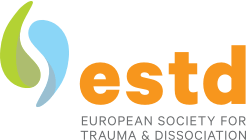Dissociation as a Key to the Treatment of Severe Eating Disorders
Natalia Seijo
Ns Centro de Psicoterapia y Trauma
The most severe cases of eating disorders can often be diagnosed as chronic when they maintain the same symptoms over time. Without response to the most common treatment protocols and behaviors with food and rejection to the body. Although improvements can be achieved, they are usually temporary and sooner or later, the patient ends up back to square one. In the most common treatment protocols, dissociation is not considered as part of the problem that contributes to the severity of psychopathology. Without the work with dissociation and the dissociative parts, the disorder comes to crystallize.
When identifying dissociation in eating disorders, it is important for clinicians to conceptualize the most severe cases where the meaning of food, eating and other behaviors related to the body become the expression of what happens in their inner world. It is important to identify and understand the most frequent dissociative parts in these disorders. Both types of eating disorders, from the restrictive ones to the overeating ones provide a clue as to what they protect and mean to the client. By understanding and identifying dissociation, and its role in these disorders, we have the key to resolving the most difficult cases. It will be relevant to know which part refuses to eat or eats too much. The phobias between parts and how the phobia is focused on the symptom with food. The change from one part to another and how the eating disorder changes with the part is activated. The difference between parts, their characteristics, and the adverse life experiences or traumas may be associated. Conceptualizing and preparing specific treatment plan will help to have more tools and resources for working with the most serious cases that up to now have caused concern among professionals due to the seriousness with which they arrive.
Learning goals:
– It will learn to understand serious cases of eating disorders from the perspective of the internal world and dissociation. Not just focus on the symptom with the food.
– It will learn to recognize the parts associated with the different eating patterns.
– It will learn to understand how the parts can function as independent disorders.
– It will learn to recognize the phobias of parts associated with behaviors of food.
– It will learn to understand and associate the parts with the adverse experiences or traumas with which they connect.
– It will learn the role of dissociation with the food associated for each part.
